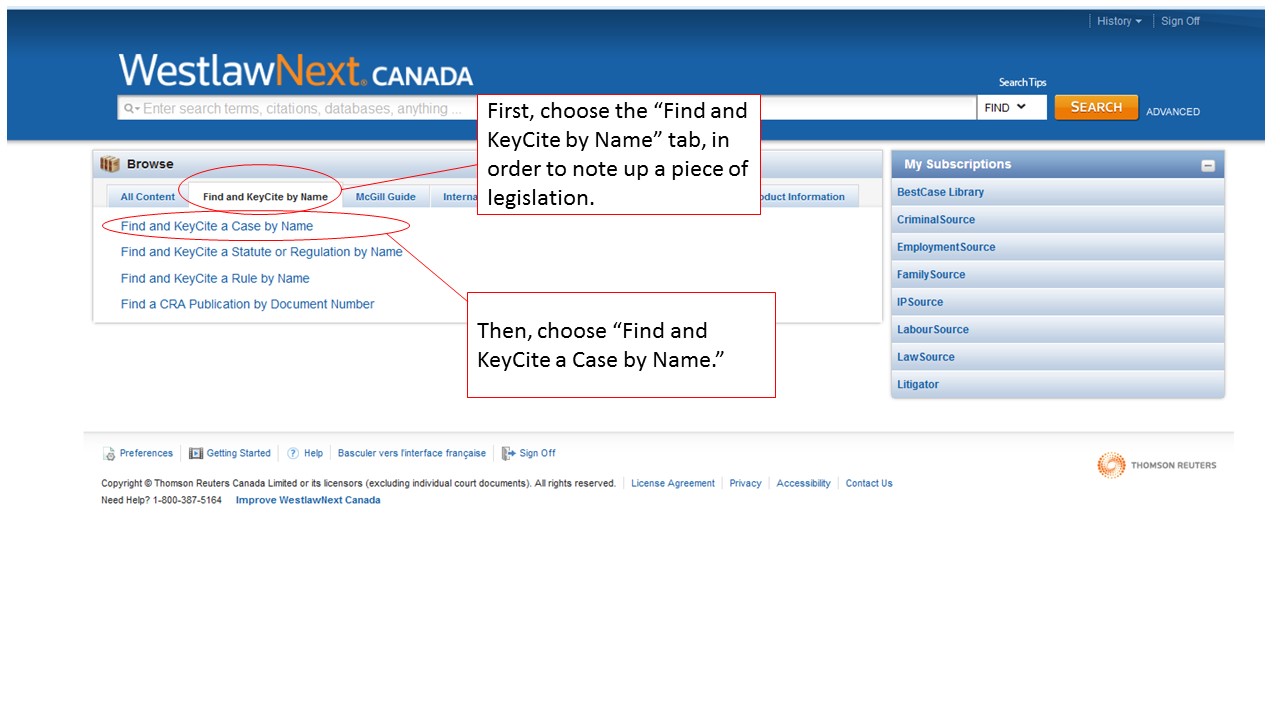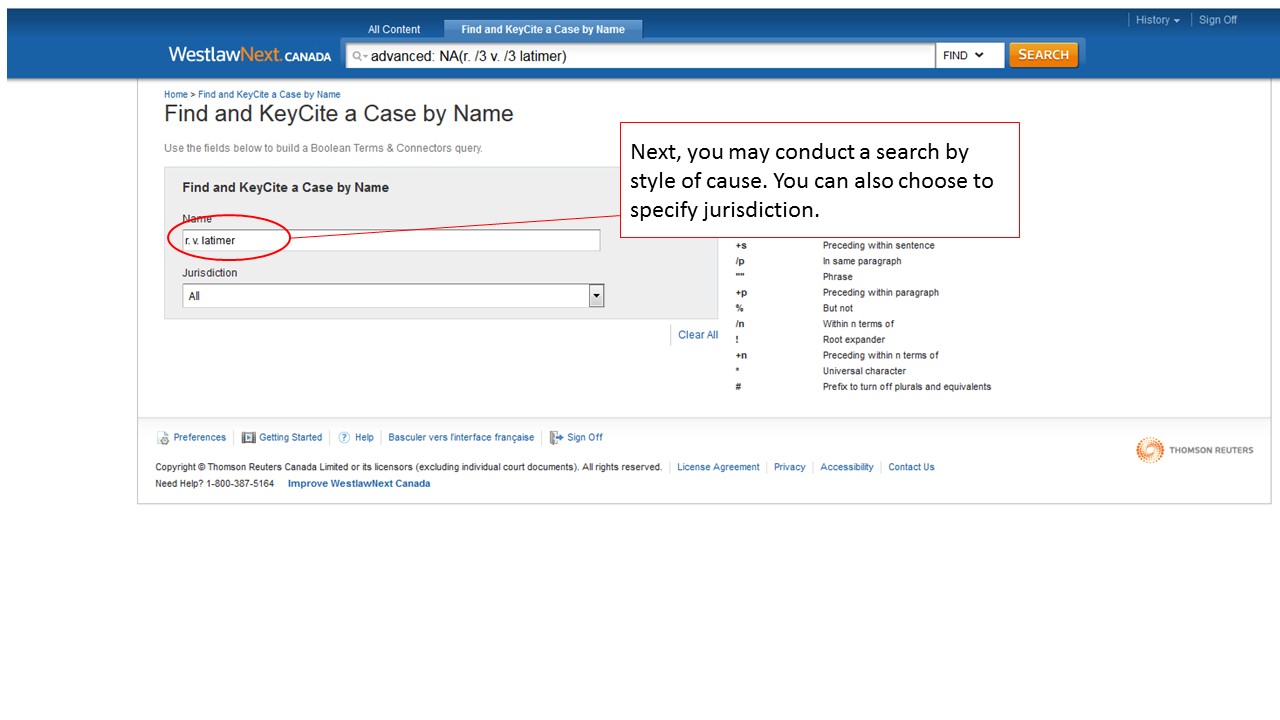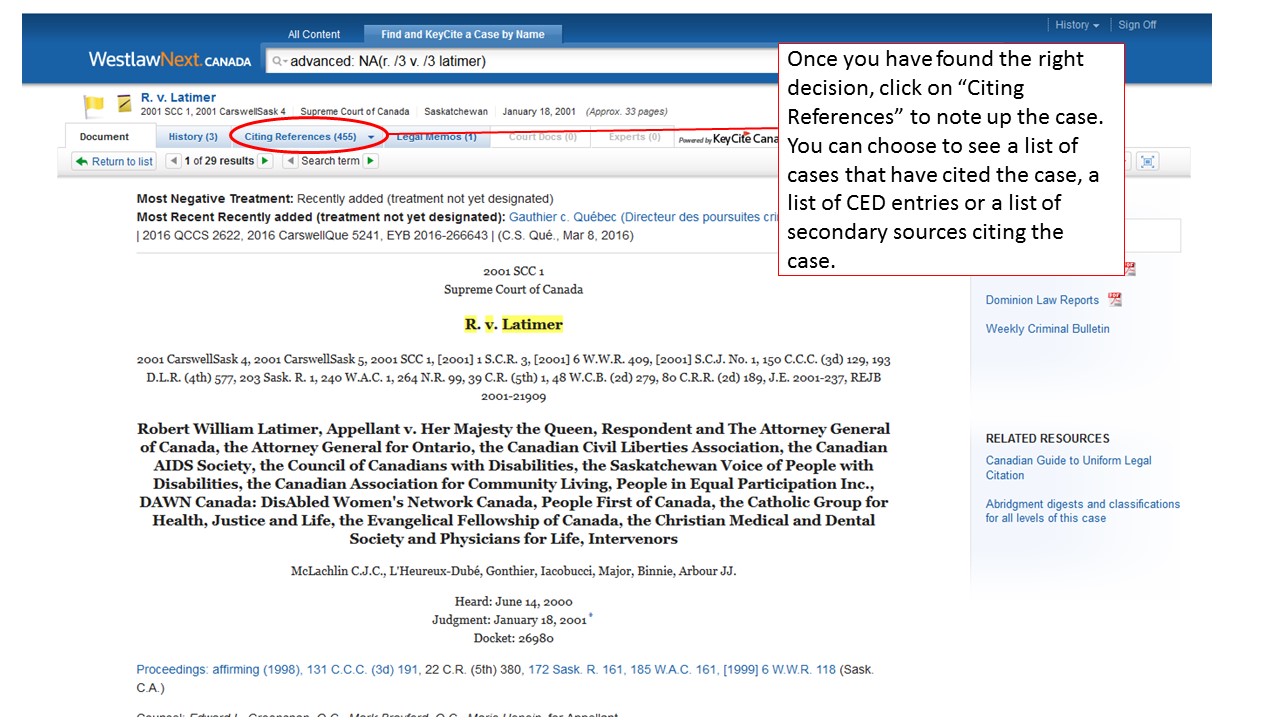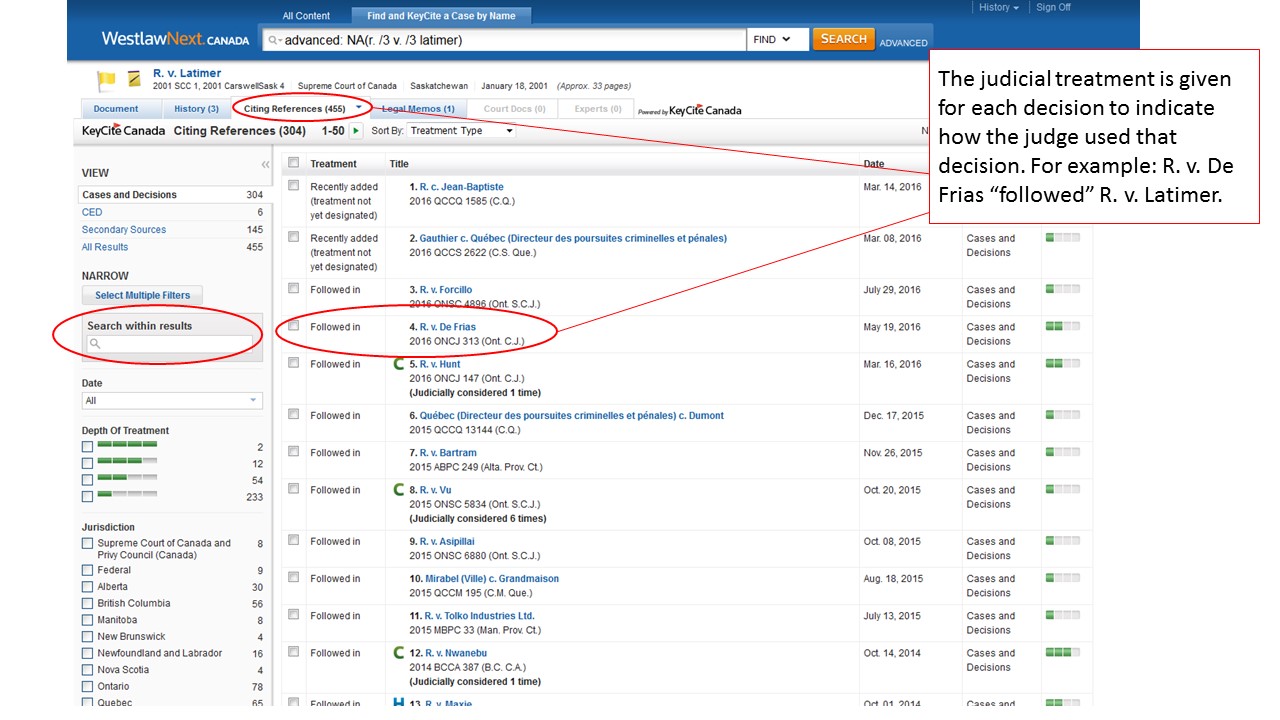Case Law and the Canadian Abridgement – Noting-Up Electronically with KeyCite Canada
The KeyCite Canada function in Westlaw Canada provides three ways to access the history of a case and to note-up.
- Click on the Find and KeyCite tab

- Inserting the style of cause.

- Find the citing references.

- Finding the judicial treatment.

Westlaw KeyCite Case Treatment Symbols
The following terms are used to indicate what sort of judicial treatment a case has received from subsequent citing cases:
Followed - Principle of law in cited case adopted or decider's reasoning applied.
Distinguished - Cited case inapplicable because of difference in facts or law.
Not followed/overruled - Cited case wrongly decided.
Considered - Some consideration given to cited case.
Referred to - Cited case is referred to.
IMPORTANT NOTE: You should be familiar with the scope of the coverage periods used by any of the services you use for noting-up case law. Here is a comparative table which compares KeyCite and QuickCITE coverage periods:
| KeyCite coverage | QuickCITE coverage |
|---|---|
| KeyCite commenced coverage of judicial consideration of appellate unreported cases in 1987, and all superior court cases in 1992. | Originally QuickCite did not cover unreported decisions dated prior to 1993. More recently, decisions are being added that pre-date 1993. |
| For cases before 1987, KeyCite may not include cases that merely refer to the cited case. | QuickCite includes cases that merely refer to the cited case. |
| KeyCite has excellent historical coverage, starting in 1867. | Originally QuickCite's coverage did not start until 1940, except for decisions of the Supreme Court of Canada and Privy Council. More recently, decisions are being added that pre-date 1940. |
| KeyCite adds citing cases more quickly than QuickCite, but they do not have a treatment code assigned when first added. | QuickCite includes judicial consideration by courts of board and tribunal decisions released after 1994. |
| KeyCite features | QuickCITE features |
| KeyCite does not include locus page references. | QuickCite shows the page or paragraph reference for the cited case, referred to as a locus page reference. |
| Cases in LawSource display a KeyCite status flag, indicating whether the case is still good law and whether it has history or has been considered. | Cases in Quicklaw display a QuickCite status symbol indicating whether the case is still good law and whether it has history or has been considered. |
| Citing cases listed in a KeyCite report also display a KeyCite status flag. | Citing cases listed in a QuickCite report also display a QuickCite status symbol. |
| Direct history usually contains a description for each case listed. | Direct history for older cases usually does not contain a description for each case listed, but direct history description is available for newer cases. |
| KeyCite is designed to quickly tell you whether a case is good law, through status flags, organising results by treatment code, and grouping case history with negative treatment. Results can also be customized in several ways including by court level, date, jurisdiction, and type of consideration. | QuickCite results first show a summary of treatments for the case. The citing cases are shown by default in reverse chronological order. They can be easily sorted and filtered in various ways, including by jurisdiction, by court, by level of court, by date, and by negative or positive treatment. |
| KeyCite allows refinement of results by conducting a keyword search within the KeyCite results. | QuickCite does not permit refinement by keyword. |
| KeyCite includes references to secondary sources that have considered the case. | QuickCite results do not include secondary source references. |
(from legalresearch.org/docs/process08.html#Coverage_and_Features)
